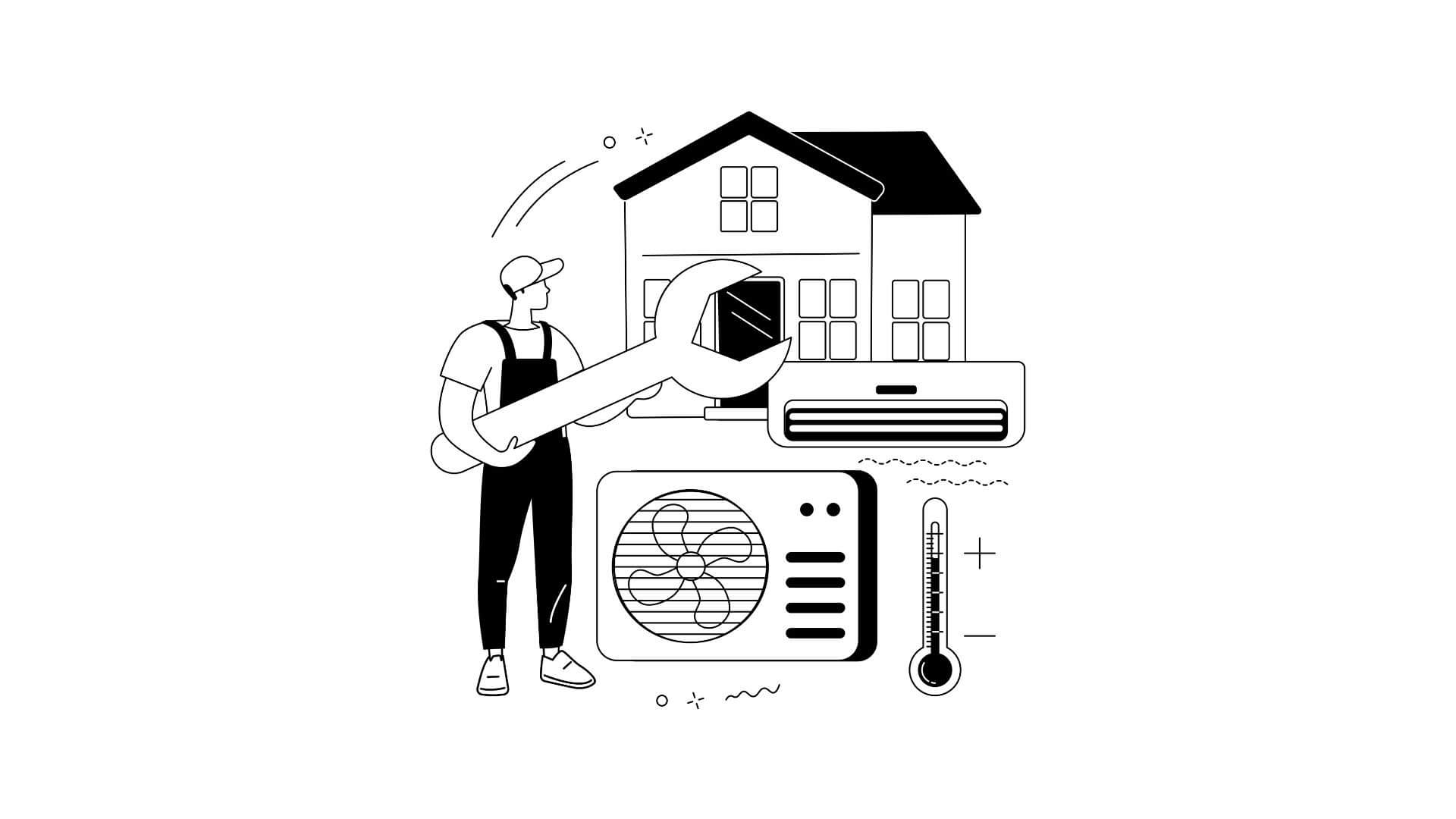An HVAC (Heating, Ventilation, and Air Conditioning) system is an essential component of residential, commercial, and industrial buildings. It regulates the indoor environment by controlling temperature, humidity, and air quality to ensure comfort and safety for occupants.
HVAC systems play a crucial role in maintaining optimal conditions for various activities, ranging from day-to-day living to specialized processes in industries. In this article, we will explore the different aspects of HVAC systems, their components, and their significance in creating a comfortable and healthy indoor environment.
1. Understanding HVAC Systems
An HVAC system consists of several interconnected components that work together to provide heating, ventilation, and air conditioning. It utilizes mechanical engineering principles and technologies to control and distribute air within a building. The primary functions of an HVAC system include heating, cooling, humidity control, air filtration, and air movement. Checking top HVAC companies listed by state can help you find reputable service providers to maintain or upgrade your system efficiently. Partnering with experienced professionals ensures optimal performance and energy efficiency for your HVAC system.
2. Plenums in HVAC Systems
A plenum is an integral component of HVAC systems, serving as a space or chamber where air is collected or distributed. It acts as a transition point between the main HVAC unit and the ductwork, facilitating the efficient flow of air. Furthermore, a plenum in an HVAC system is typically located above the ceiling or below the floor, providing a centralized area for air distribution. And, the main purpose of a plenum is to ensure balanced airflow throughout the building.
It allows for the equal distribution of conditioned air to different areas or zones. The plenum also accommodates dampers, filters, and other devices that help regulate and improve the quality of the air passing through the system.
3. Heating
Heating is a fundamental function of any HVAC system, especially in colder regions. Heating is typically achieved through a furnace or a boiler that generates heat, which is then distributed throughout the building using ductwork or pipes. Common heating methods include forced air systems, radiant heating, and geothermal heat pumps. If you're upgrading or maintaining your system, you might be looking for Reznor HVAC solutions known for their reliability and performance.
4. Cooling
Cooling is another essential aspect of HVAC systems, especially in warmer climates. Cooling is typically achieved through air conditioning units that remove heat from the indoor environment and transfer it outside. The most common cooling systems include central air conditioners, split systems, and heat pumps.
5. Ventilation
Ventilation refers to the process of exchanging indoor air with fresh outdoor air. It helps maintain air quality, remove odors, control moisture, and prevent the buildup of harmful gases and pollutants. Ventilation systems can be either natural (such as windows and vents) or mechanical (such as fans and air handlers).
6. Air Distribution
Air distribution is a critical component of heating and cooling systems, responsible for delivering conditioned air to different areas within a building. Ductwork, which consists of a network of channels, carries the heated or cooled air from the main system to various rooms. Properly designed and installed ductwork ensures efficient airflow and balanced distribution of air throughout the building.
7. Thermostats and Controls
Thermostats and controls are the brains behind HVAC systems, allowing users to set and regulate the desired temperature, humidity levels, and other environmental parameters. Modern thermostats are equipped with advanced features like programmable schedules, remote access, and smart learning capabilities, enhancing energy efficiency and user convenience.
8. Energy Efficiency Components
Energy efficiency is a significant consideration in HVAC systems due to their substantial energy consumption. High-efficiency HVAC systems use advanced technologies and design principles to minimize energy wastage and reduce utility costs. Energy-efficient components, such as variable speed motors, zoning systems, and advanced insulation, contribute to overall system efficiency.
9. Indoor Air Quality
Maintaining good indoor air quality is crucial for occupant health and comfort. HVAC systems play a vital role in filtering and purifying indoor air by removing pollutants, allergens, and contaminants. Air filters, air purifiers, and ventilation systems with heat recovery mechanisms help improve indoor air quality and create a healthier living or working environment.
10. Maintenance and Servicing
Regular maintenance and servicing are essential for ensuring the optimal performance and longevity of HVAC systems. Routine inspections, cleaning, and preventive maintenance help identify and address potential issues before they escalate, minimizing downtime and costly repairs. Professional HVAC technicians are trained to perform maintenance tasks and address any system-related problems effectively.
11. Retrofitting and Upgrades
With technological advancements, it is often possible to retrofit existing HVAC systems or upgrade them to more efficient models. Retrofitting involves making improvements to the system, such as replacing outdated components, upgrading insulation, or integrating smart controls. Upgrades can significantly enhance system performance, energy efficiency, and user comfort.
12. Environmental Impact
HVAC systems have a significant environmental impact due to their energy consumption and refrigerant use. The choice of refrigerants, such as hydrofluorocarbons (HFCs), or more eco-friendly alternatives like hydrofluoroolefins (HFOs), can significantly influence the system's environmental footprint. Additionally, energy-efficient HVAC systems reduce greenhouse gas emissions and contribute to sustainability goals.
13. Zoning Systems
Zoning systems are a valuable addition to HVAC systems, allowing for customized temperature control in different areas or zones of a building. With zoning, occupants can set specific temperature settings for individual rooms or zones, optimizing comfort and energy efficiency. Zoning systems typically utilize dampers within the ductwork to regulate airflow to different zones, providing flexibility and personalized climate control.
14. Integration with Building Automation Systems
Building Automation Systems (BAS) integrate various building systems, including HVAC, lighting, security, and more, into a centralized control system. HVAC systems can be seamlessly integrated with BAS, allowing for comprehensive monitoring, control, and optimization of building operations. Integration with BAS enables energy management, data analysis, and remote monitoring, enhancing overall system performance and energy efficiency.
HVAC systems are crucial for maintaining comfortable and healthy indoor environments in residential, commercial, and industrial buildings.
By combining heating, cooling, ventilation, and air distribution, these systems provide optimal temperature, humidity, and air quality control. Energy efficiency, indoor air quality, and regular maintenance are key considerations in ensuring optimal system performance.
As the HVAC industry continues to evolve, incorporating innovative technologies and sustainable practices, the future holds exciting possibilities for more efficient, eco-friendly, and intelligent HVAC systems.





